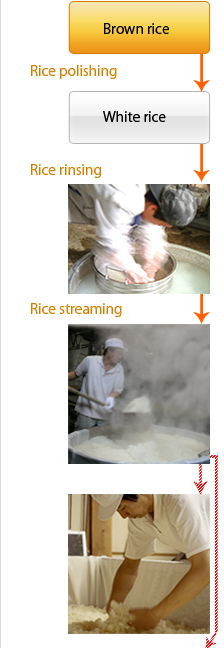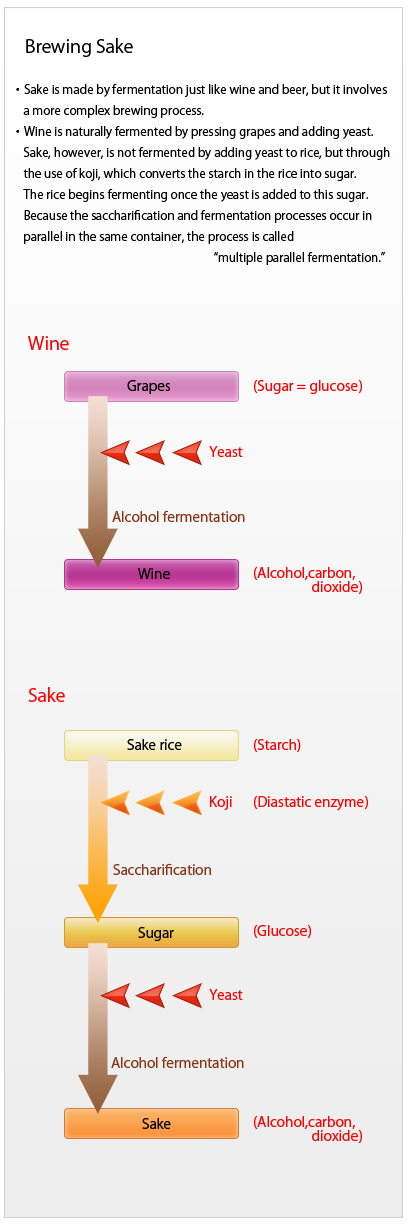Ingredients
As mentioned above, the primary ingredients are rice, water and Koji .
---Rice---
The rice used exclusively for brewing sake is called sake rice. The grain is larger and has softer texture which contains less protein than the ordinary rice eaten by the Japanese.
Sake rice is more expensive due to the complicated cultivation method.
---Water---
Water is one of the important ingredients for making sake. Rigid restrictions are observed for the concentrations of certain chemical substances which can affect the taste and quality of sake.
The water used is almost always groundwater or well water. Urban breweries usually import water from other areas, because of the difficulty of getting water of sufficient quality locally.



[Mujou Junmai Daiginjo Gold]
Polishing Yamada Nishiki (rice) to 40%, Gohyaku Mangoku (rice) to 50%: polishing outer of rice, leaving inside of starch.
[Mujou Junmai Ginjo Silver & Mujou Junmai Ginjo]
Polishing Gohyaku Mangoku (rice) 55%: polishing outer of rice, leaving inside of starch.
Rinsing and soaking the polished rice
Steaming the rice: for making
Koji, Shubo, and Moromi.
making Koji – a portion of steamed rice is taken to a Koji room (temperature and
moisture controlled room), and then, used to create the Koji by sprinkling
it with the Koji-kin which is mold.
making Shubo – Shubo is mixture of steamed rice, water,
Koji and yeast. Shubo needs about two weeks to concentrate of yeast cells.
making Moromi – Moromi is mixture of more steamed rice, Koji, Shubo, and water.
Moromi making: This process takes four days. First day: Shubo is mixed with more steamed rice, water, and Koji. Second day: Resting day Third day: more steamed rice, water, and Koji is added. Fourth day: more steamed rice, water, and Koji is added again.
Moromi is fermented for 25 to 30 days.
Moromi is pressed though the mesh to separate the sake from the solids precipitated during fermentation.

